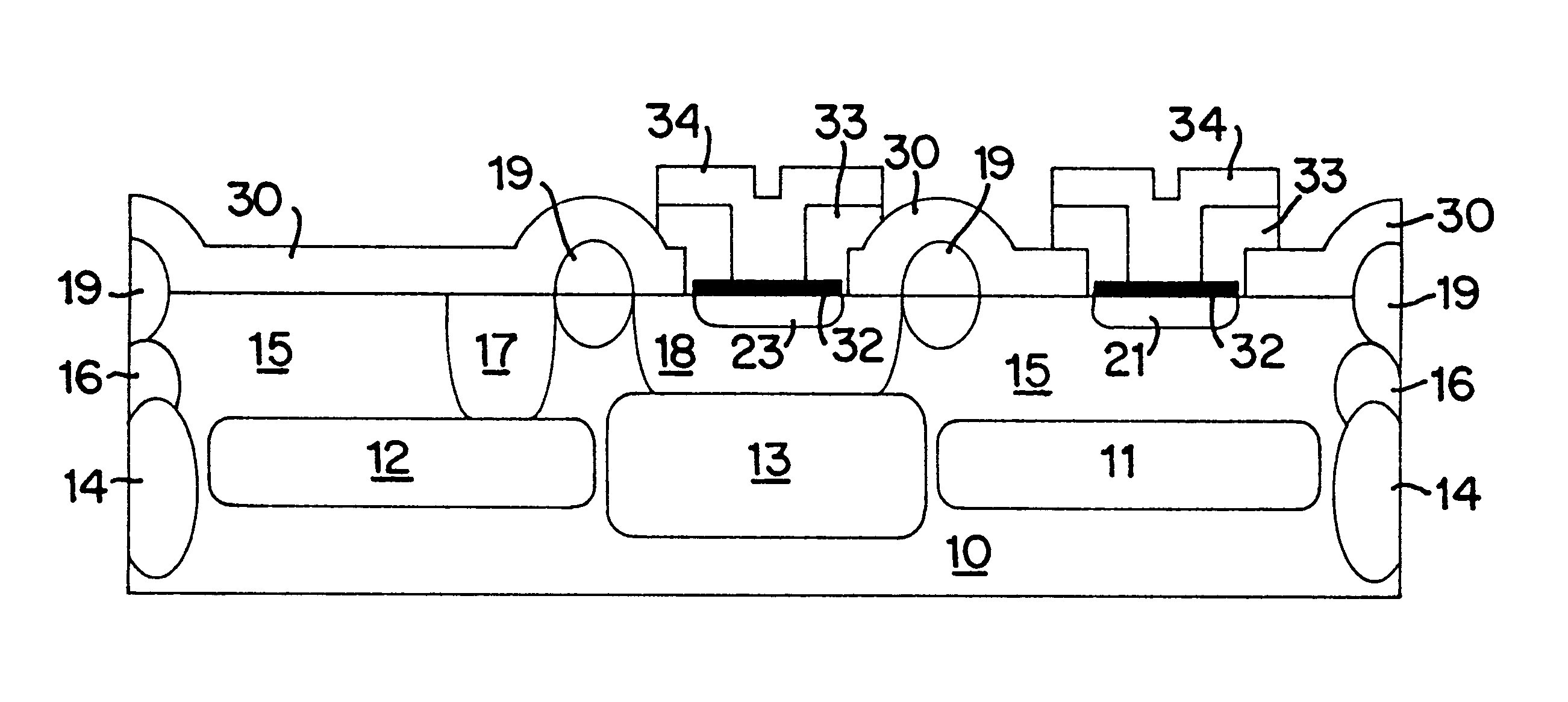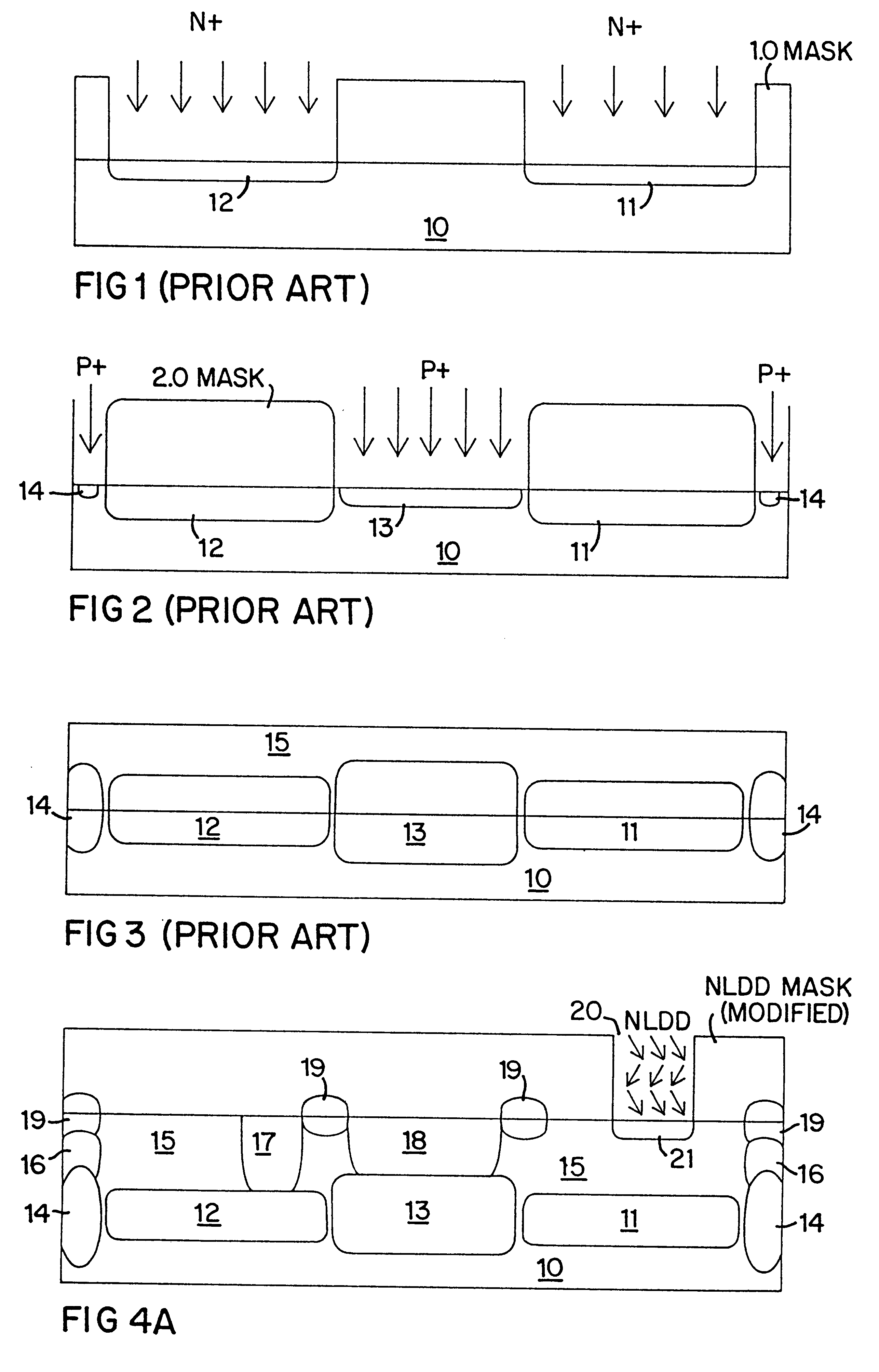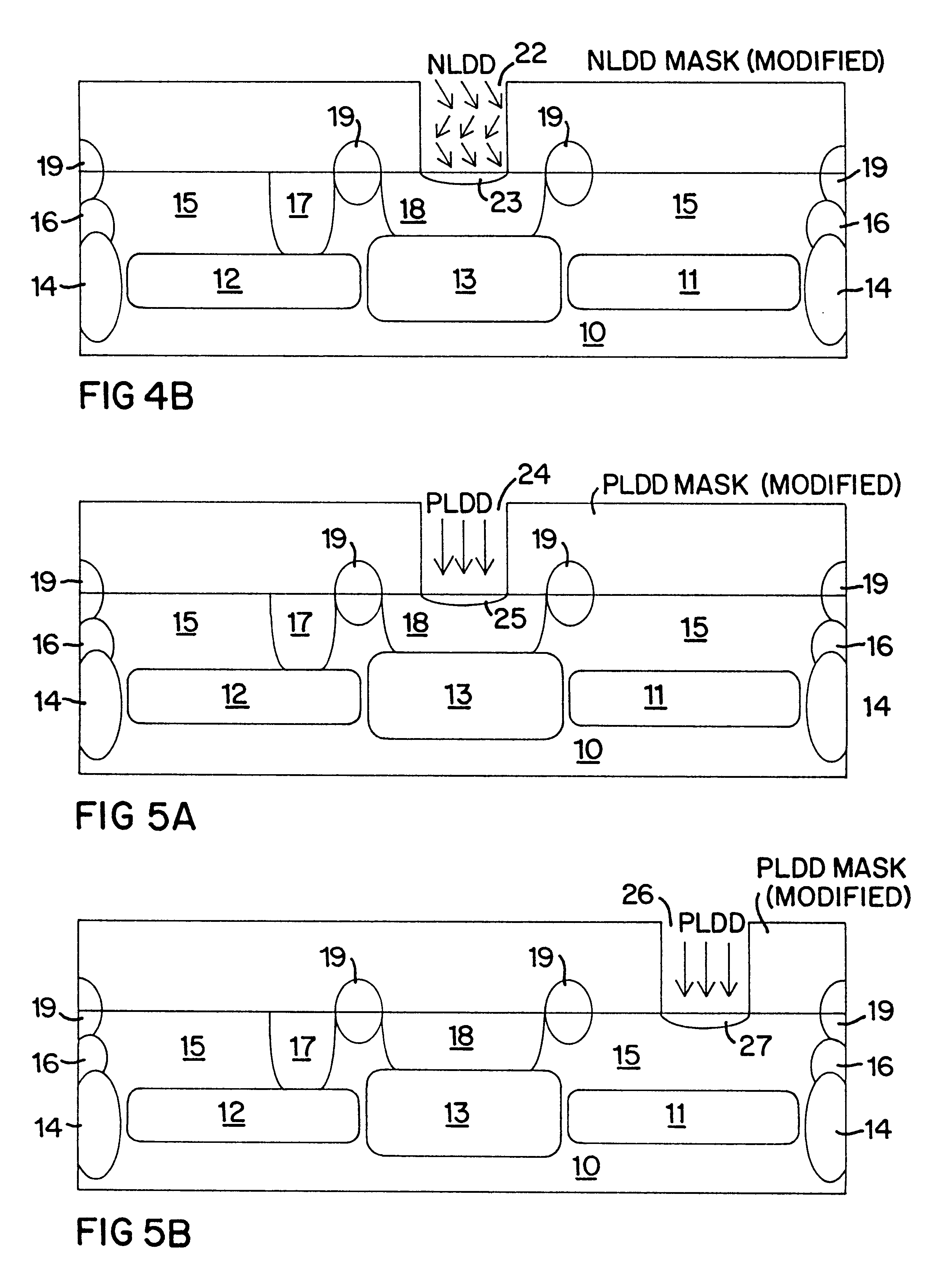Method of fabricating Schottky diode and related structure
a diode and diode structure technology, applied in the direction of diodes, semiconductor devices, electrical equipment, etc., can solve the problems of reducing device yield, affecting device performance, and affecting device performance, so as to improve the structure of schottky diodes, reduce the cost of fabrication, and maintain parasitic capacitance low
- Summary
- Abstract
- Description
- Claims
- Application Information
AI Technical Summary
Benefits of technology
Problems solved by technology
Method used
Image
Examples
Embodiment Construction
Methods of fabricating several types of improved Schottky diode structures of the present invention at essentially no cost are described in conjunction with a series of key fabrication steps shown in FIGS. 1-7. The fabrication process used to form one or more Schottky diodes may be, and preferably are, integrated into BiCMOS or CMOS fabrication steps previously noted, without adding any new steps. New structures and the relevant mask modifications are shown in FIGS. 4-7. The overall exemplar BICMOS transistor structure mask sequence is the sequence summarized in the Summary of the Invention with modifications as indicated. Of course, alternative fabrication steps may be employed, provided a barrier-modifying layer forms a portion of the Schottky diode between the metal-suicide anode and the doped cathode layer. While the present discussion focuses on the formation of an N-type Schottky diode and the associated N-type epitaxial layer, it is to be understood that similar adjustments i...
PUM
 Login to View More
Login to View More Abstract
Description
Claims
Application Information
 Login to View More
Login to View More - R&D
- Intellectual Property
- Life Sciences
- Materials
- Tech Scout
- Unparalleled Data Quality
- Higher Quality Content
- 60% Fewer Hallucinations
Browse by: Latest US Patents, China's latest patents, Technical Efficacy Thesaurus, Application Domain, Technology Topic, Popular Technical Reports.
© 2025 PatSnap. All rights reserved.Legal|Privacy policy|Modern Slavery Act Transparency Statement|Sitemap|About US| Contact US: help@patsnap.com



